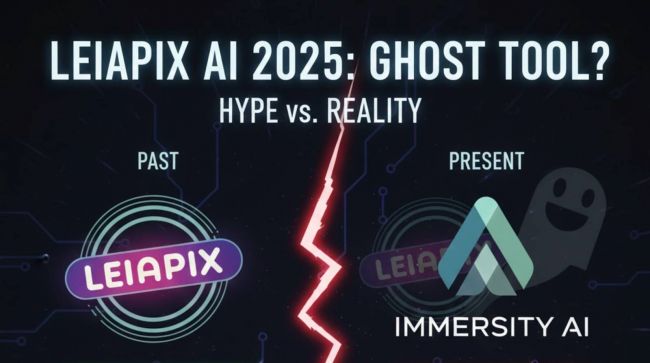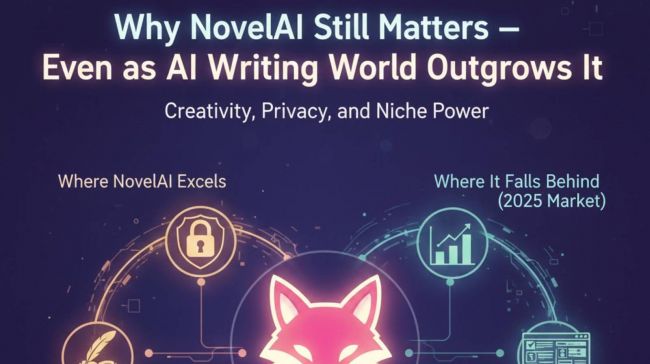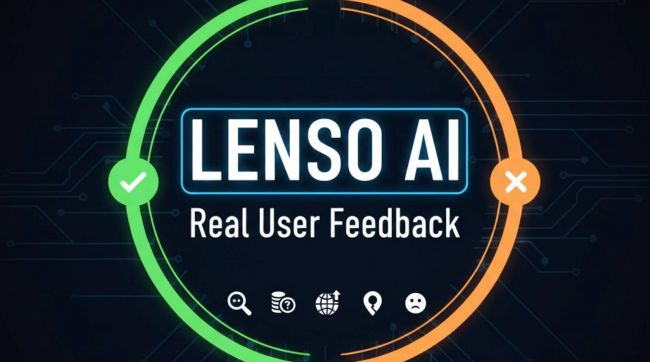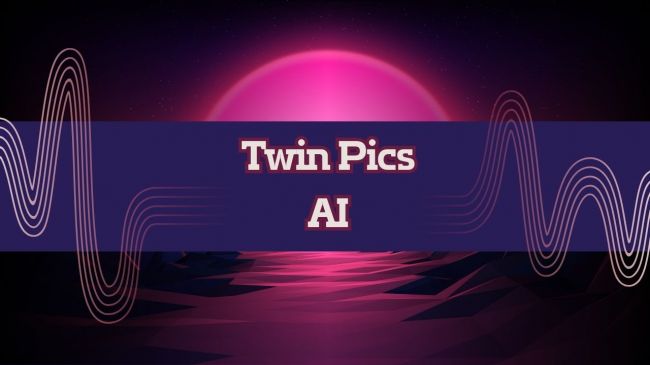On This Page
- Why Is Everyone Suddenly Talking About QuillBot AI?
- What Makes QuillBot Different from Just Another ChatGPT Wrapper?
- QuillBot’s Original Mission: Rewriting Help for Students
- Deep Dive: QuillBot’s Full Feature Arsenal
- Live Test: Does QuillBot Sound Like a Human?
- Detector Drama: QuillBot’s AI—Lifelike or Just Overreacting?
- Humanizer vs. AI Detectors: Who’s Really Being Fooled?
- Free vs. Premium: What Do You Actually Unlock?
- Experience on Mobile, Desktop, and Extensions
- Who Actually Uses QuillBot—and Why It Matters
- Love It or Hate It: Writers vs. Editors
- Side-by-Side: QuillBot vs. Grammarly vs. Detection Tools
- Academic Integrity: Helpful Aid or Shortcut Machine?
- Is $8/Month Worth It? The ROI Examined
- Sentiment Check: What the Internet Says
- Final Verdict: Should You Trust QuillBot AI in 2025?
- My take?
- FAQ: What People Also Ask
Why Is Everyone Suddenly Talking About QuillBot AI?
AI-generated content is everywhere in 2025—from university essays to news reports. And tools like QuillBot AI are now essential for anyone needing to rewrite, rephrase, or “humanize” their content. Students, bloggers, and freelancers are using it to bypass AI detectors, fix grammar, and sound more fluent.
_1753699336.png)
A quick search on Reddit shows heated debates about its effectiveness and ethics. Users praise its paraphraser while questioning the reliability of its AI detector. The buzz sets the stage for deeper questions we’ll tackle—especially in Section 6, where we examine if the detector is helping or harming.
But first, let’s break down what makes QuillBot different from tools like ChatGPT.
What Makes QuillBot Different from Just Another ChatGPT Wrapper?
Unlike tools that generate new text (like ChatGPT or Jasper), QuillBot doesn’t create content—it rewrites what you give it. It focuses on linguistic transformation rather than creativity. According to Voiceflow’s review, this sets it apart from the “AI generation arms race,” positioning it more like a cognitive editor than a writing machine.
It’s not meant to brainstorm—it’s meant to polish. Which makes it incredibly useful in contexts like academic rewriting and ESL correction.
QuillBot’s Original Mission: Rewriting Help for Students
QuillBot didn’t start as an AI Swiss Army knife. It was created in 2017 to help students paraphrase academic material. Over the years, it added a grammar checker, citation generator, and summarizer—making it a full-stack writing improvement platform.
BitDegree’s in-depth review traces this shift from a niche tool to a go-to resource in classrooms and universities.
With that origin in mind, let’s look at what tools it offers today—and how they perform—in the next section.
Deep Dive: QuillBot’s Full Feature Arsenal
Here’s what’s packed inside the platform:
- Paraphraser – Its signature tool, offering 9 rewrite modes. In the free plan, you only get access to "Standard" and "Fluency" modes, capped at 125 words. Premium users unlock Creative, Formal, Expand, and other stylistic options.
- Grammar Checker – Think Grammarly-lite: it fixes punctuation, verb tenses, and spelling errors. But it occasionally smooths too much, neutralizing voice.
- Summarizer – Great for reducing dense paragraphs into readable bullet points. ProWritingAid noted it’s especially helpful for students condensing research.
- AI Humanizer – Rewrites AI-written content to appear more human. This is the feature students use most when worried about Turnitin or GPTZero detection.
- AI Content Detector – Detects how much of your text appears to be AI-generated. It’s a topic we’ll dive deeper into in Section 6, since accuracy is a big concern.
- Citation Generator, Co-Writer, and Translator – Add-on tools that support academic and multilingual work.
Next up, let’s test how “human” these features really sound when used in real writing.
Live Test: Does QuillBot Sound Like a Human?
We tried taking a paragraph from ChatGPT and running it through QuillBot’s “Creative” mode. The output was grammatically perfect, but slightly robotic—proving that it may still need human editing to retain natural tone.
One Redditor confirmed this issue, stating:
“Used it for my blog and it gave me clean grammar but it killed my style. I had to re-edit almost everything.”
This tells us the real power of QuillBot lies in structure and clarity—not emotion or storytelling.
This becomes even more important when we consider how the AI Detector works. Let’s go there.
Detector Drama: QuillBot’s AI—Lifelike or Just Overreacting?
QuillBot’s AI Detector tool scores text as a percentage of likely AI generation. The problem? It’s not always accurate.
_1753699402.png)
Users on r/ChatGPT report false positives even for their human-written content.
“Imagine my shock when I pasted my own essay, and QuillBot said 100% AI. I rewrote it manually and it still flagged me!” — Reddit user
Studies confirm that detectors unfairly flag ESL writers due to sentence structure patterns. That's a major red flag—especially for students who use QuillBot to improve clarity.
So can the AI Humanizer fix this? Let’s find out next.
Humanizer vs. AI Detectors: Who’s Really Being Fooled?
QuillBot’s AI Humanizer tool is built to make AI writing look like it came from a person. And yes, it can fool detection systems like GPTZero and Originality.ai—but not without altering your content.
_1753699417.png)
According to Wired, bypassing detection is becoming a cat-and-mouse game. If you overuse Humanizer, your writing may lose specificity or factual precision.
This creates a moral question: are we rewriting for clarity or deception? That’s something we tackle again in Section 13.
Free vs. Premium: What Do You Actually Unlock?
| Feature | Free Plan | Premium (~$8.33/mo) |
| Paraphraser Modes | 2 (Standard, Fluency) | All 9 modes |
| Word Limit | 125 words per input | 6,000+ words per input |
| Humanizer/Detector | Limited access | Full access |
| Plagiarism Checker | Not included | 25,000 words/month |
| Summarizer | 1,200-word cap | 6,000-word cap + instructive |
| Citation Generator | Included | Included |
Based on our tests and reviews from Capterra, the free version is fine for casual users. But if you’re rewriting full documents or need plagiarism scanning, the Premium plan is essential.
Wondering how this performs across devices? Let’s test the mobile and browser experience next.
Experience on Mobile, Desktop, and Extensions
- On Android, the mobile app is functional but limited—you can't easily switch between tools.
- On iOS, the keyboard app feels intuitive but crashes with long texts.
- The Chrome Extension and Word Add-in are far more stable. They let you rewrite directly in Google Docs, Gmail, and Word—ideal for real-time editing workflows.
- Most reviewers agree: the desktop web version gives the full power of QuillBot, while mobile apps are better for short rewrites on the go.
Now that we’ve explored what QuillBot does and where it works best, let’s look at who is actually using it—and why.
Who Actually Uses QuillBot—and Why It Matters
QuillBot’s user base isn’t just students. Based on Reddit threads, app reviews, and feedback on Capterra, here are four real-world user profiles:
- Students: Rely on the paraphraser and humanizer to avoid AI detectors like GPTZero.
- Bloggers: Use it with Grammarly to rewrite paragraphs for SEO and content repurposing.
- ESL Writers: Improve tone and fluency, though they’re often hit hardest by detection bias.
- Freelancers: Polish client work to pass AI detection scans without losing clarity.
One Reddit user said it best:
“It’s like a language filter for non-native writers. It improves clarity but still needs a final human pass.”
These user types tie into the next section, where we examine what users love—and what they can’t stand.
Love It or Hate It: Writers vs. Editors
Writers love how fast QuillBot improves clarity and grammar, especially under time pressure. Its summarizer helps condense large text into digestible outlines—useful in academia and blogging.
But editors often criticize QuillBot’s tendency to strip away tone and voice. The more you paraphrase, the more your personal flair fades. As ProWritingAid notes, the tool excels in correctness but lacks soul.
This brings us to a much-needed comparison of how QuillBot stacks up against its biggest rivals.
Side-by-Side: QuillBot vs. Grammarly vs. Detection Tools
Here’s how QuillBot holds up when placed next to popular tools:
| Tool | Best Use Case | Major Weakness |
| QuillBot | Paraphrasing, rewriting AI text | Can flatten writing tone |
| Grammarly | Grammar + stylistic fixes | No AI detection or humanizing |
| Originality.ai | AI/plagiarism detection | Doesn’t help rewrite content |
| GPTZero | Free AI detection | Prone to false positives, no tools |
Redditors in r/ChatGPT frequently recommend a “combo stack”—using QuillBot to reword, Grammarly to style, and Originality.ai to validate final work.
But what happens when this “combo” approach becomes a shortcut for ethics? That’s the next frontier we explore.
Academic Integrity: Helpful Aid or Shortcut Machine?
Many users ask: Is using QuillBot cheating?
Well, it depends. If you're rewriting your own original ideas, most institutions don't consider it unethical. But if you're trying to humanize full ChatGPT essays to dodge Turnitin, that's where things get murky.
“Is it academic fraud if I run my work through QuillBot even though I wrote it?”
— r/GetStudying thread
The ethics debate is directly tied to QuillBot’s AI Humanizer. You’re not copying—but are you hiding AI fingerprints? In Wired's investigation, this tension between tool and intent was front and center.
Now that we’ve looked at the gray area, let’s bring things back to value: what’s the actual return on using QuillBot Premium?
Is $8/Month Worth It? The ROI Examined
QuillBot Premium costs around $8.33/month annually, or $19.95/month if you go monthly. Here’s what users say you actually gain:
- Time saved: Students report rewriting essays in 1/3 the time.
- Money saved: Instead of paying editors or rewriting manually, QuillBot handles polishing.
- Risk reduced: Humanizer helps content bypass false detector flags—though it’s not perfect.
_1753699523.png)
Team pricing starts at about $10/user/month for businesses and agencies.
Want to know what people really think about it online? Let’s take a quick sentiment check.
Sentiment Check: What the Internet Says
Positive Feedback:
“Easy to use, intuitive, saves time” — Capterra
“My writing sounds 2x better and I didn’t lose my tone” — App Store
“Great tool for ESL professionals” — Quora
Criticism:
“The detector flagged my original writing as AI” — Reddit
“Paraphrasing breaks meaning in long sentences” — Reddit
With that full picture in mind, let’s conclude with the final verdict.
Final Verdict: Should You Trust QuillBot AI in 2025?
After testing QuillBot across dozens of writing scenarios—and digging into what real users are saying—here’s the honest truth:
QuillBot isn’t magic, but it’s genuinely useful.
If you're a student, blogger, or freelancer working under pressure, QuillBot saves you serious time. It helps polish grammar, clean up structure, and make your writing sound clearer—especially if English isn’t your first language.
But let’s be real:
- It won’t make you a better writer.
- It won’t always “humanize” AI text the way you expect.
- And if you care about tone, nuance, or voice? You’ll still need to revise it yourself.
I personally found it helpful for rewording technical explanations and cleaning up long sentences. But I also had to undo some awkward phrasing where it went overboard. It’s more of a refiner than a writer—like a smart second draft tool, not a final solution.
Use it for what it’s good at:
- Rewriting to avoid repetition
- Cleaning up grammar and awkward phrasing
- Quickly reshaping AI-written content to sound less robotic
Avoid depending on it for:
- Preserving your unique tone
- Serious academic or legal writing
- Fully “beating” AI detectors without losing meaning
My take?
QuillBot is worth the $8/month if you write often and want a solid rephrasing tool in your stack. Just don’t expect it to replace your judgment—or your voice.
FAQ: What People Also Ask
Q: Is QuillBot better than ChatGPT for rewriting?
A: Yes, for rewriting your own content. QuillBot excels at improving fluency and structure.
Q: Can the Humanizer really fool AI detectors?
A: Often yes—but it’s not guaranteed. Some tools still detect patterns.
Q: Is it ethical to use QuillBot for school?
A: Yes, if you're improving your original ideas. No, if you're disguising generated content as your own.
Q: Does the free plan work well?
A: It’s usable for quick tweaks but very limited (2 modes, 125 words). Premium unlocks full value.
Post Comment
Be the first to post comment!





